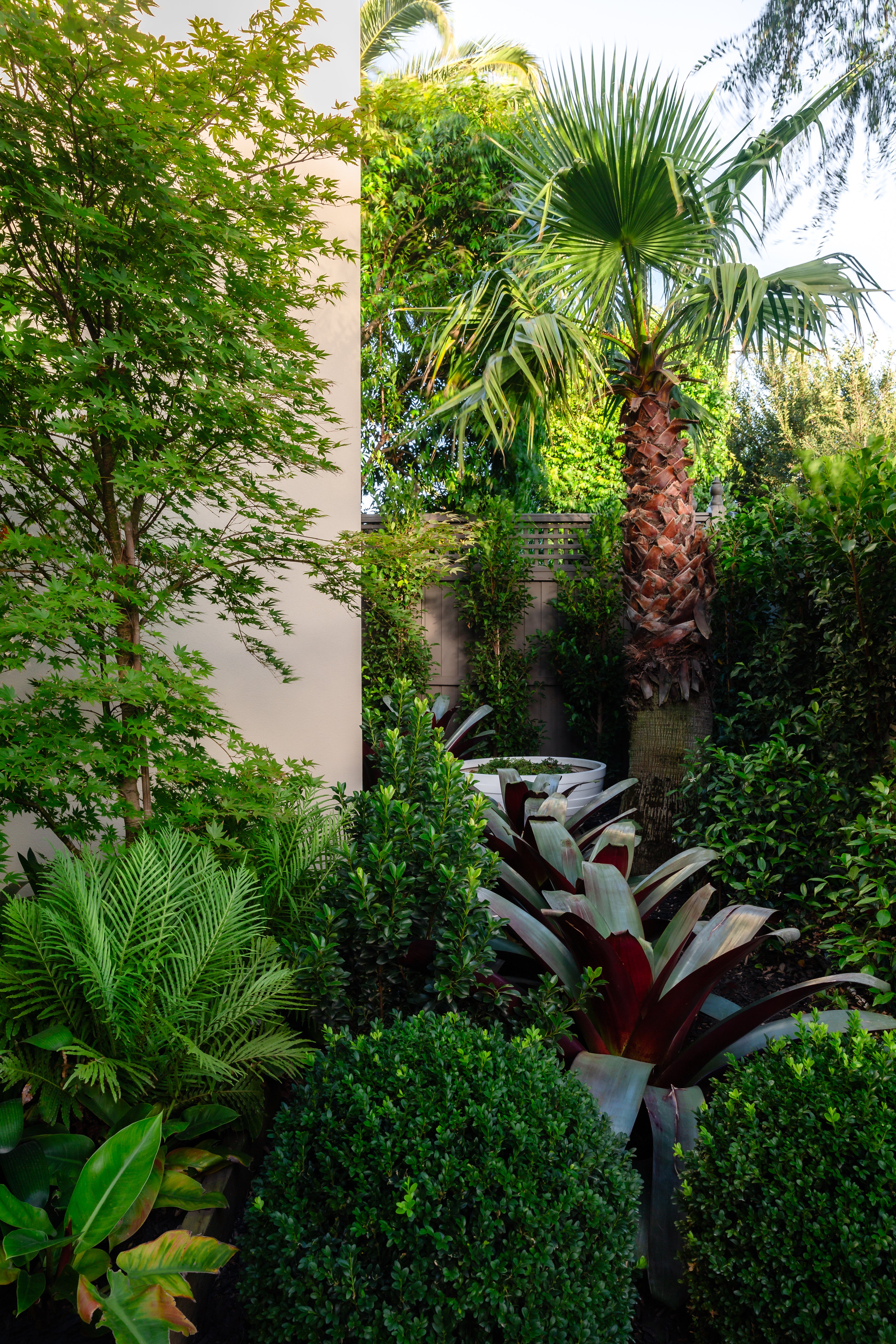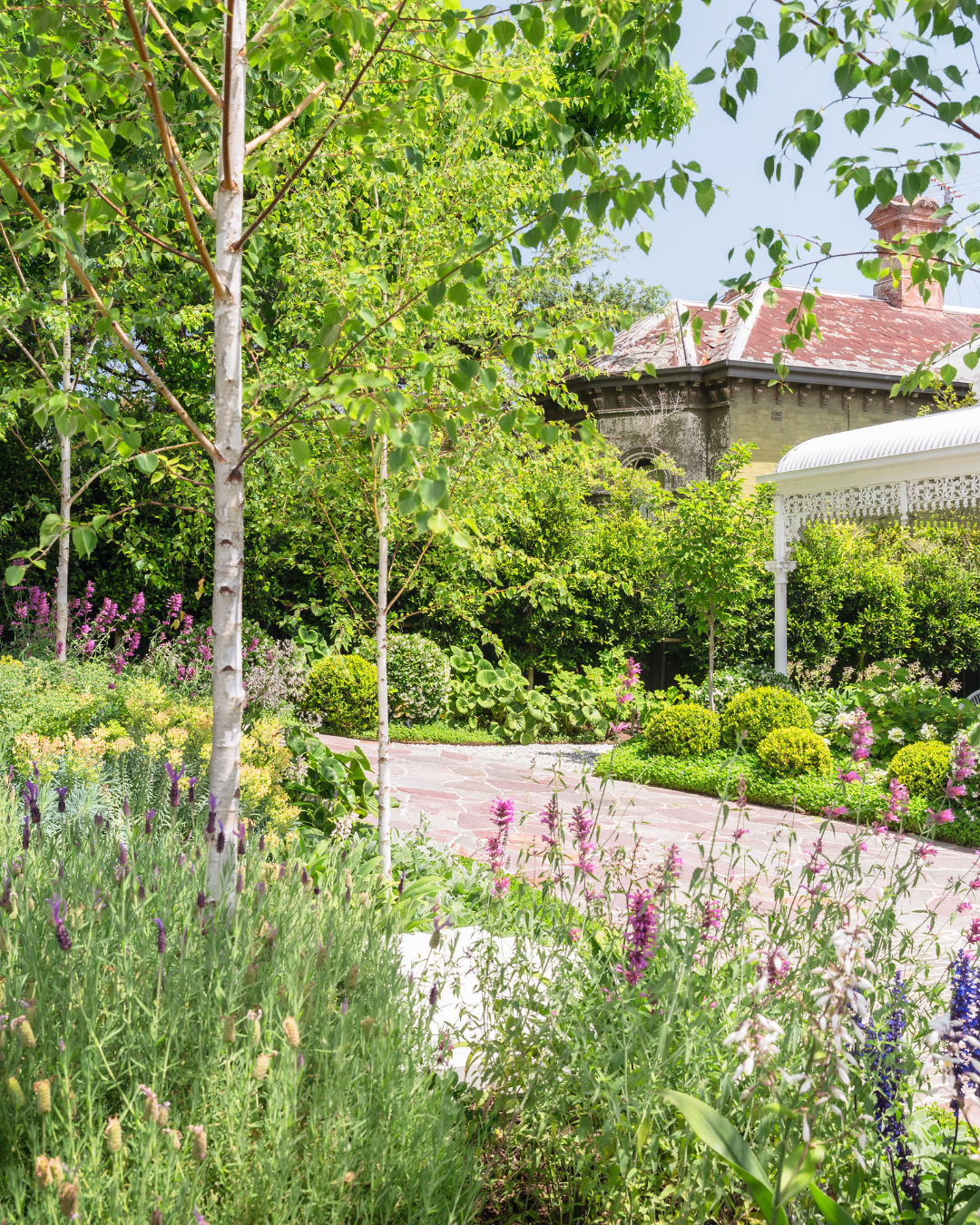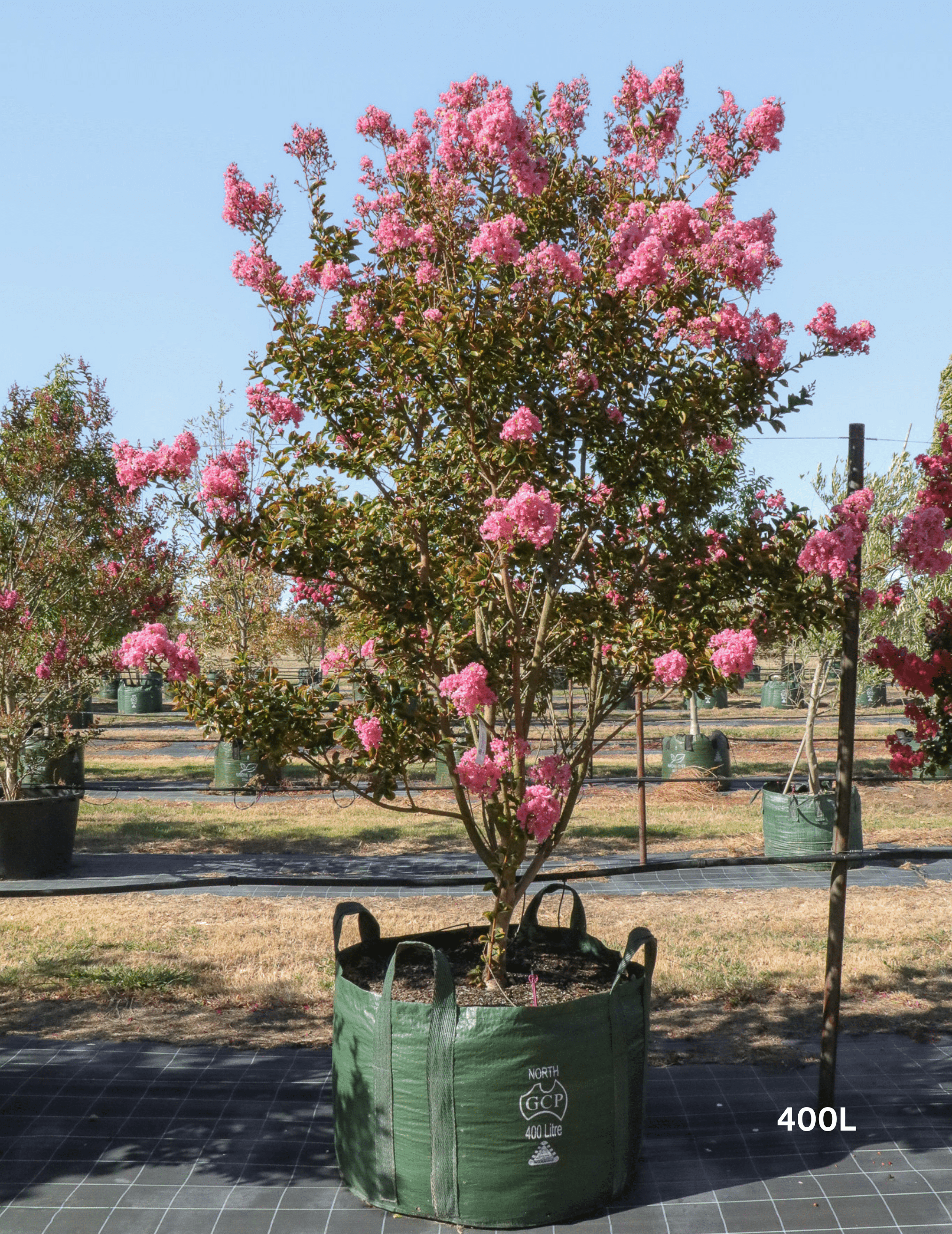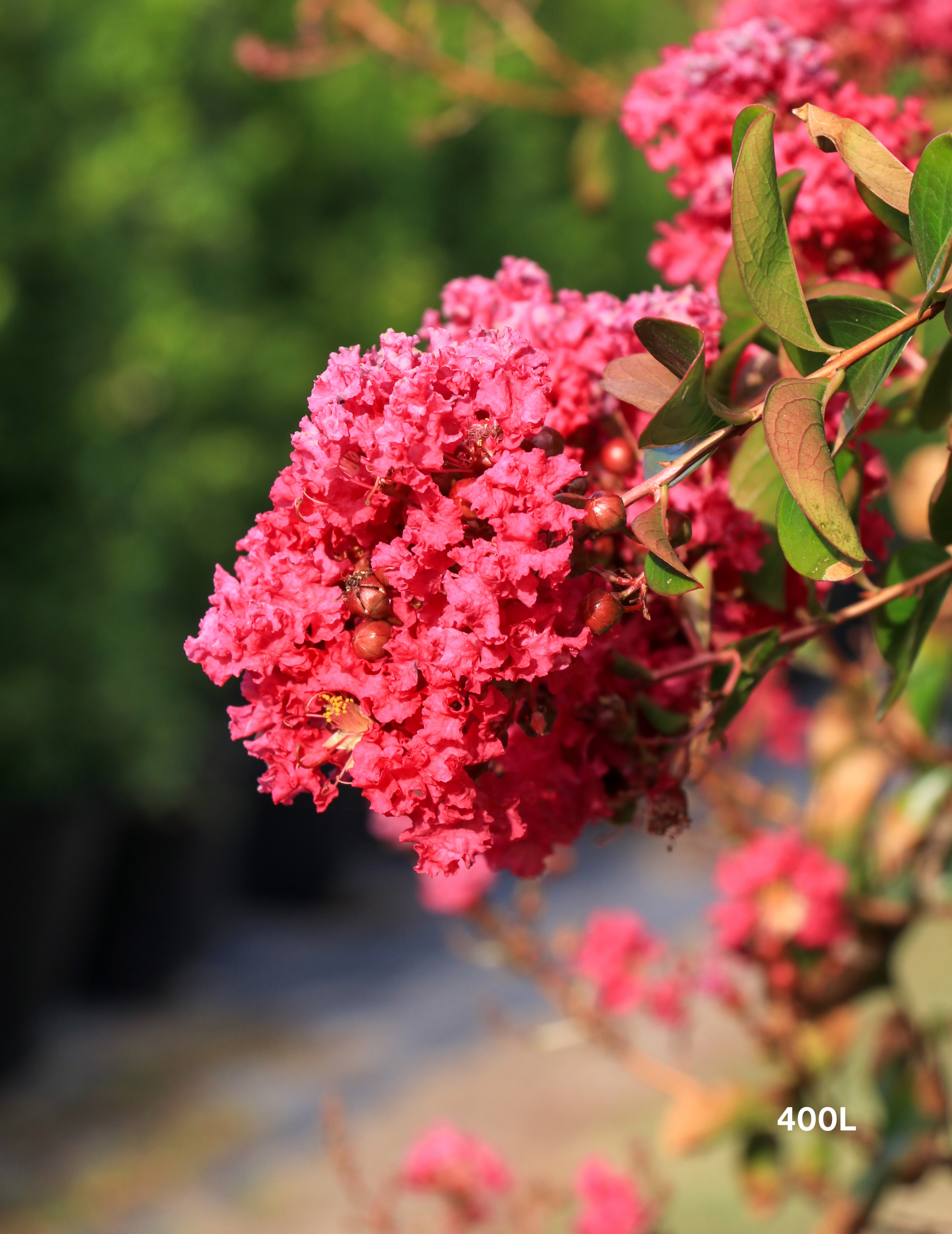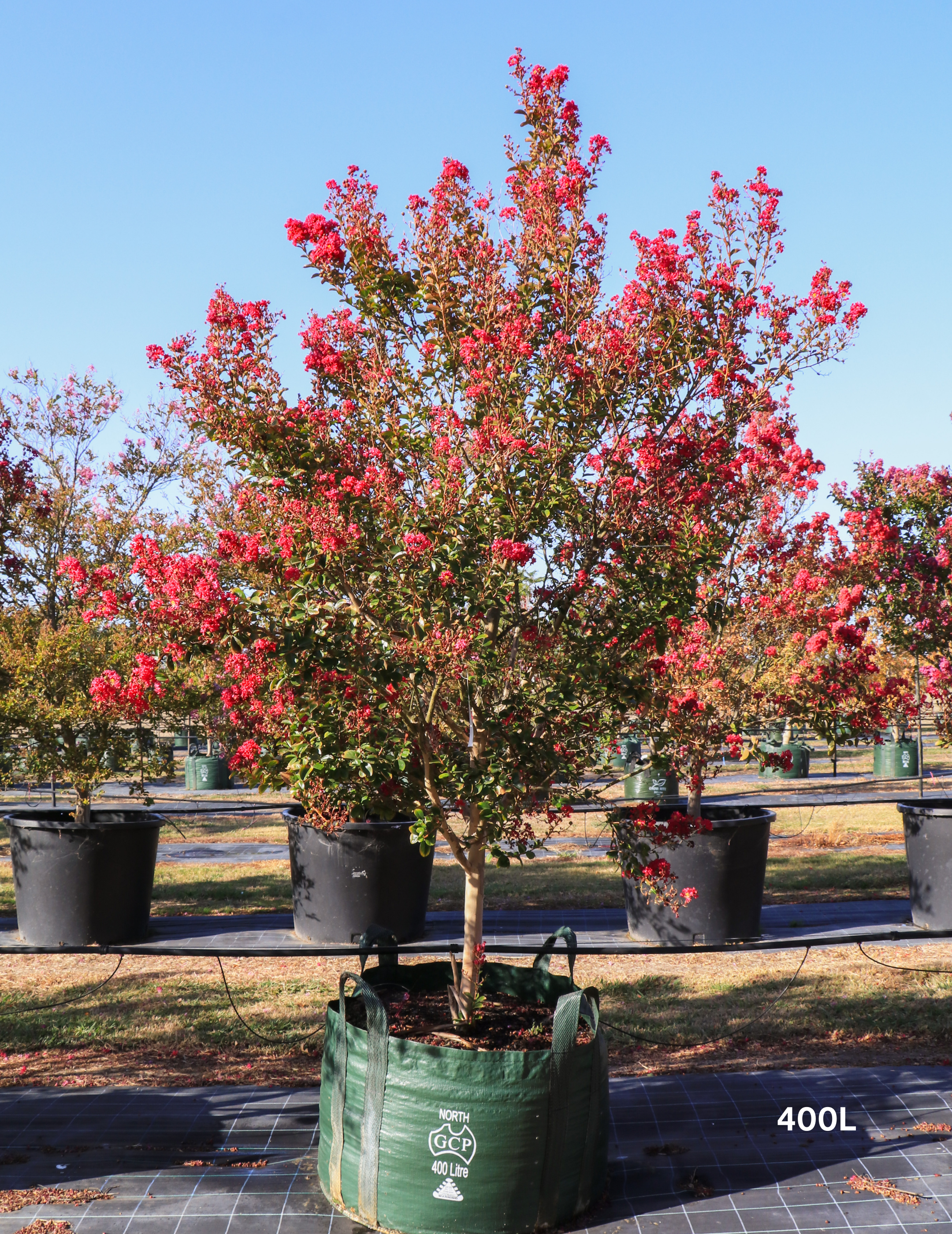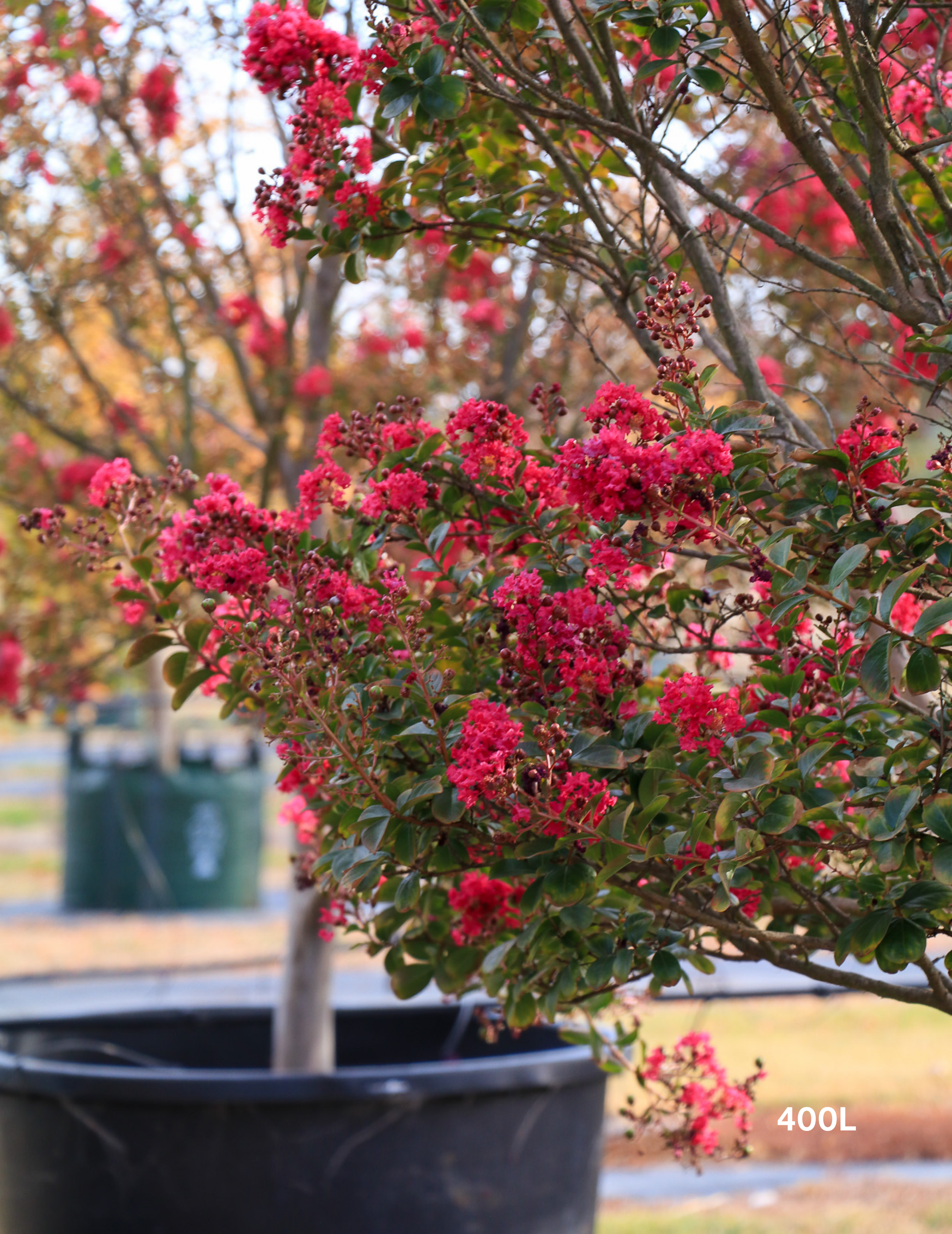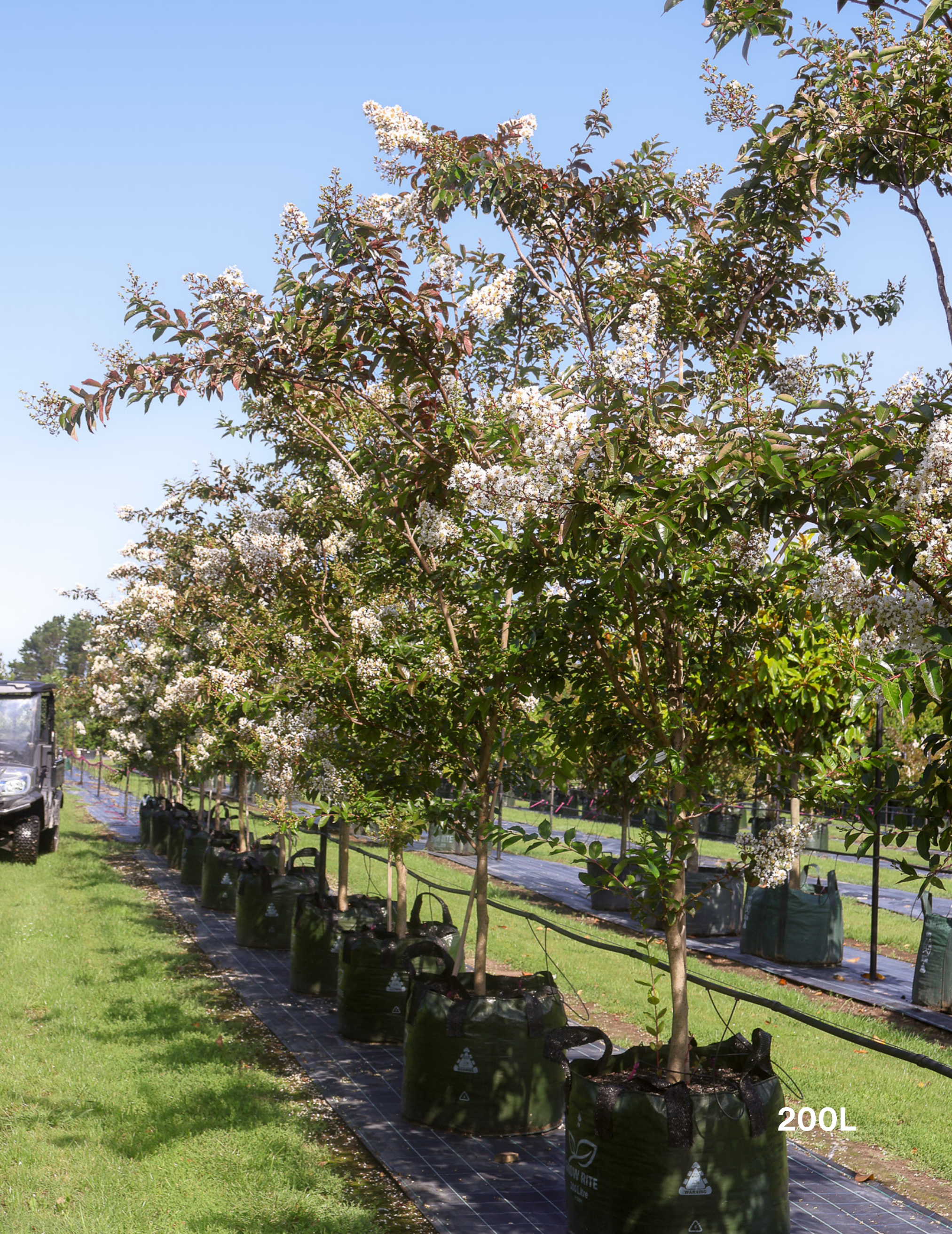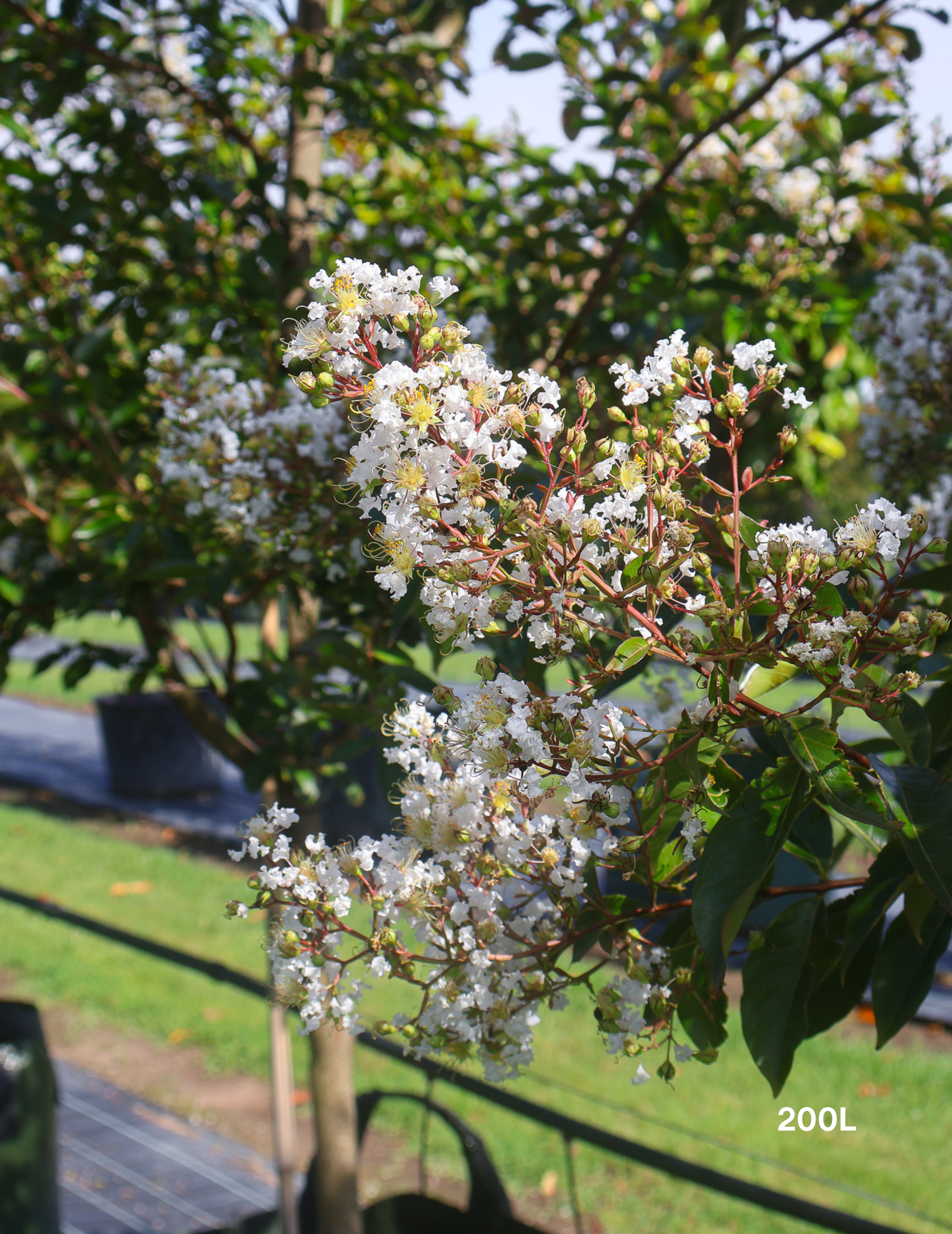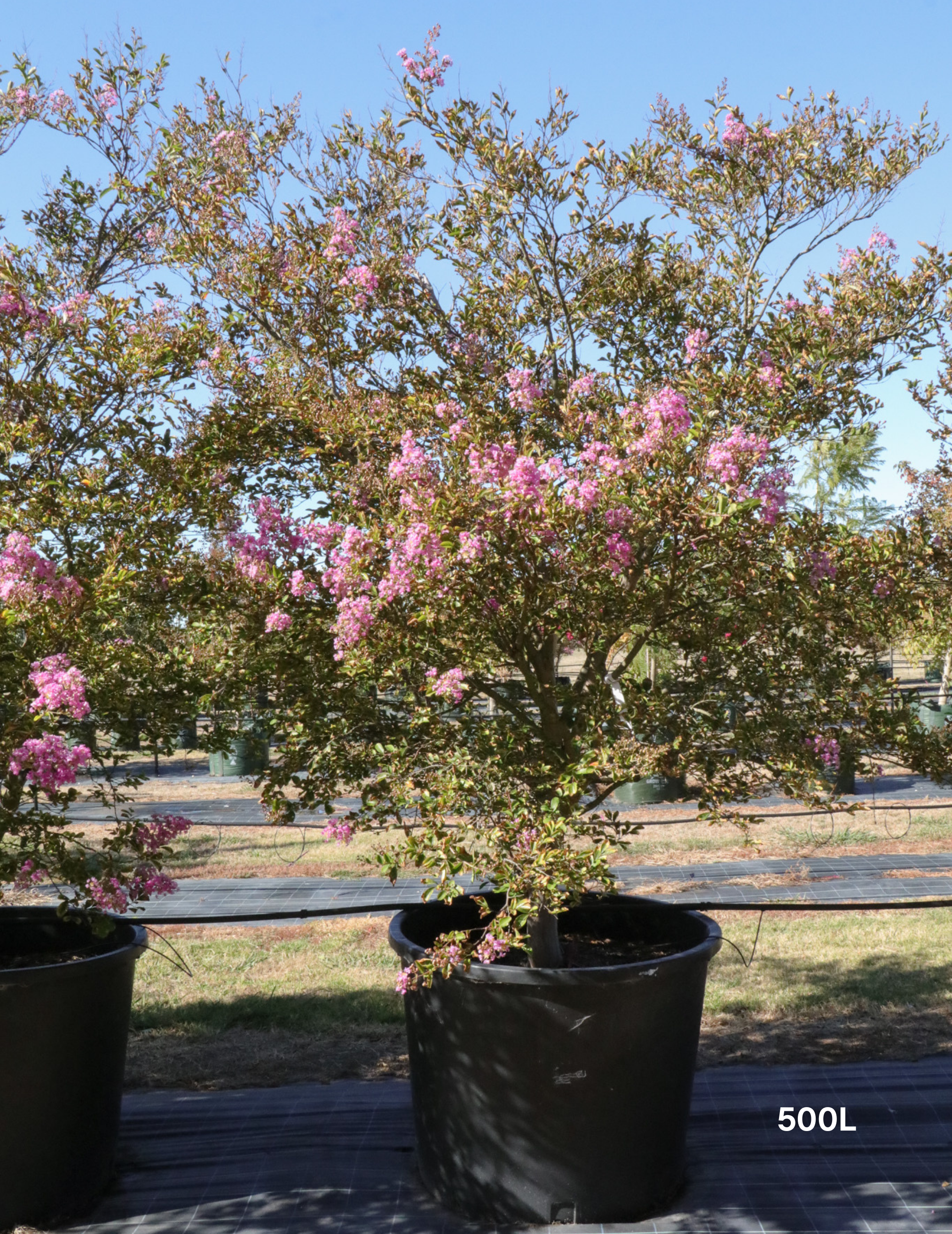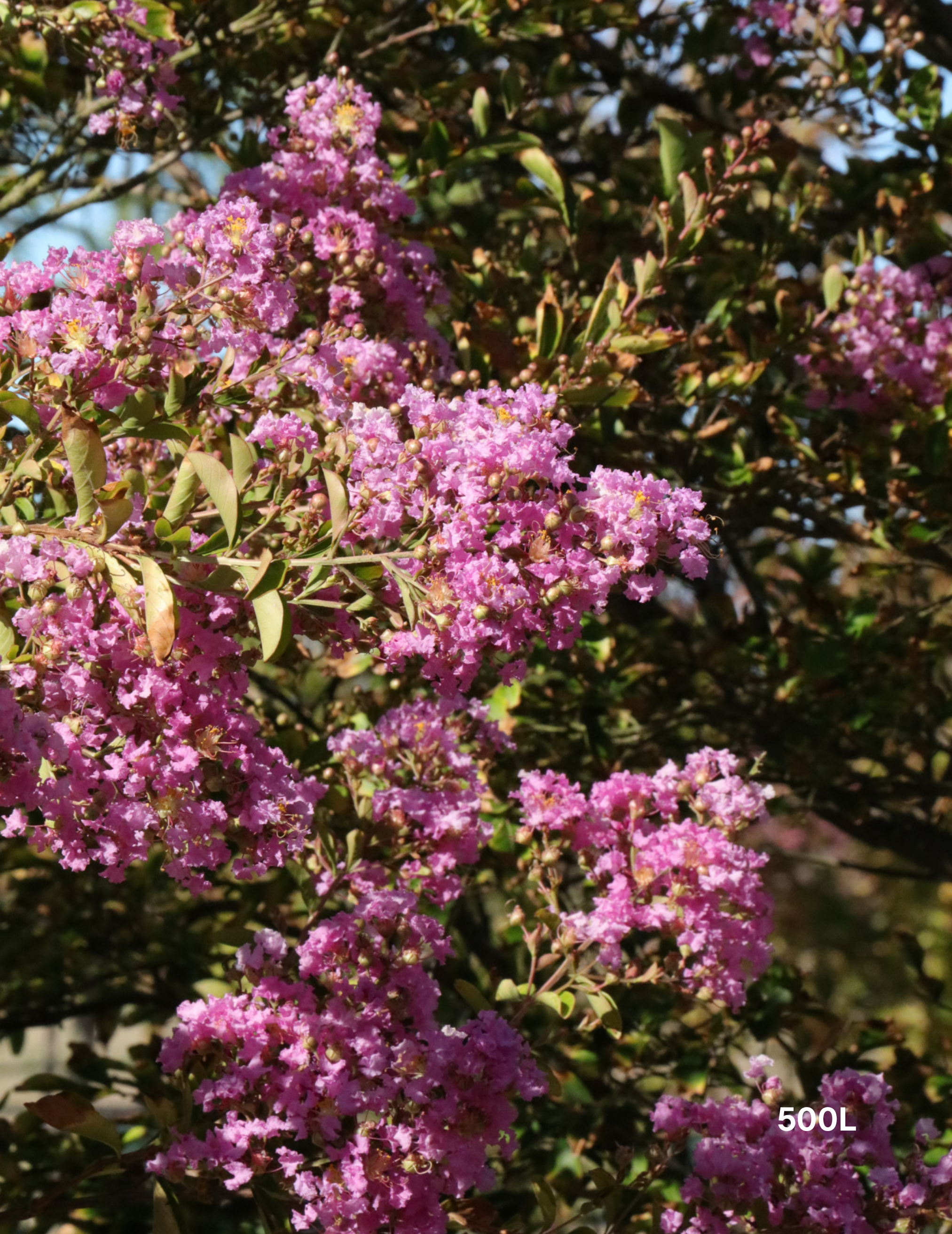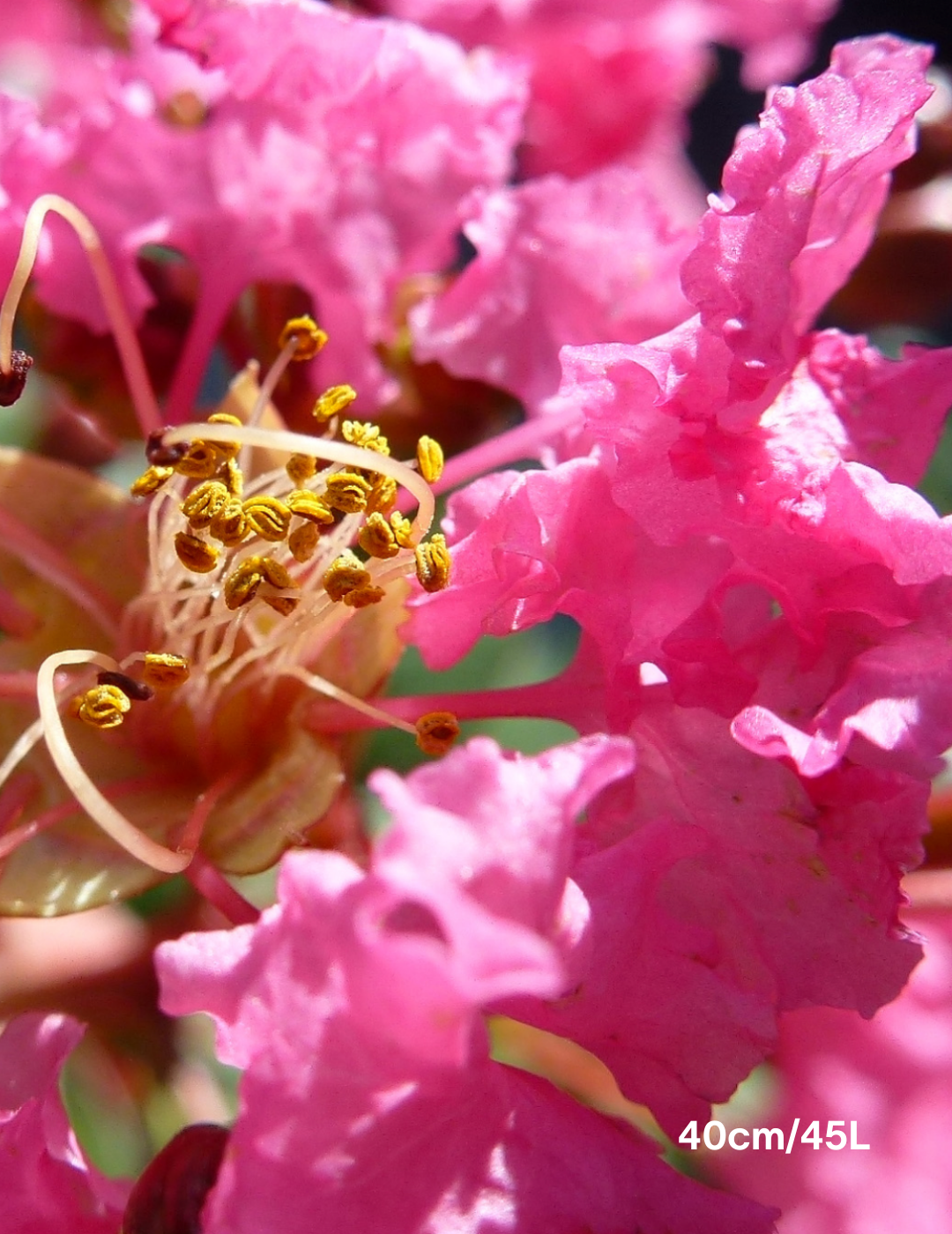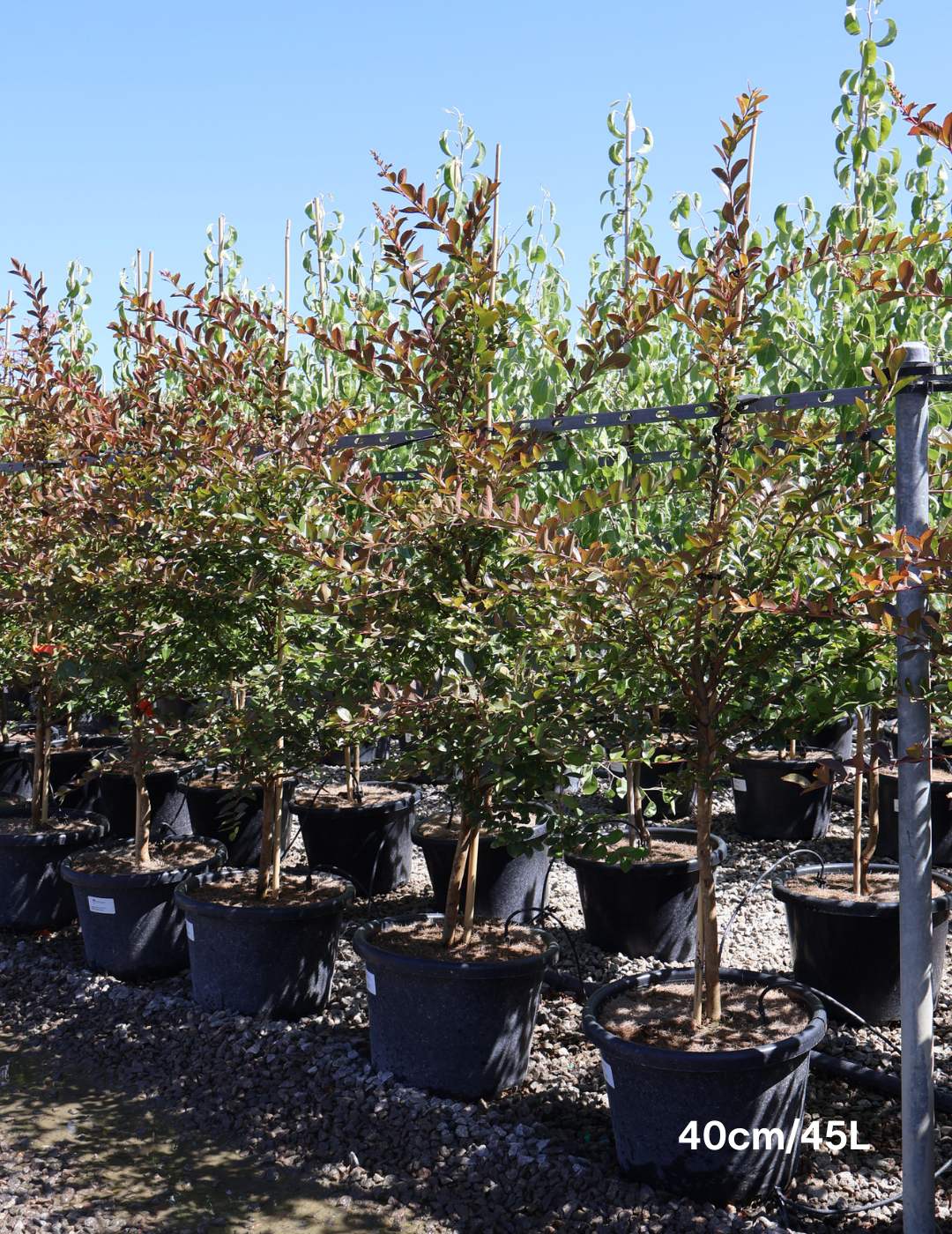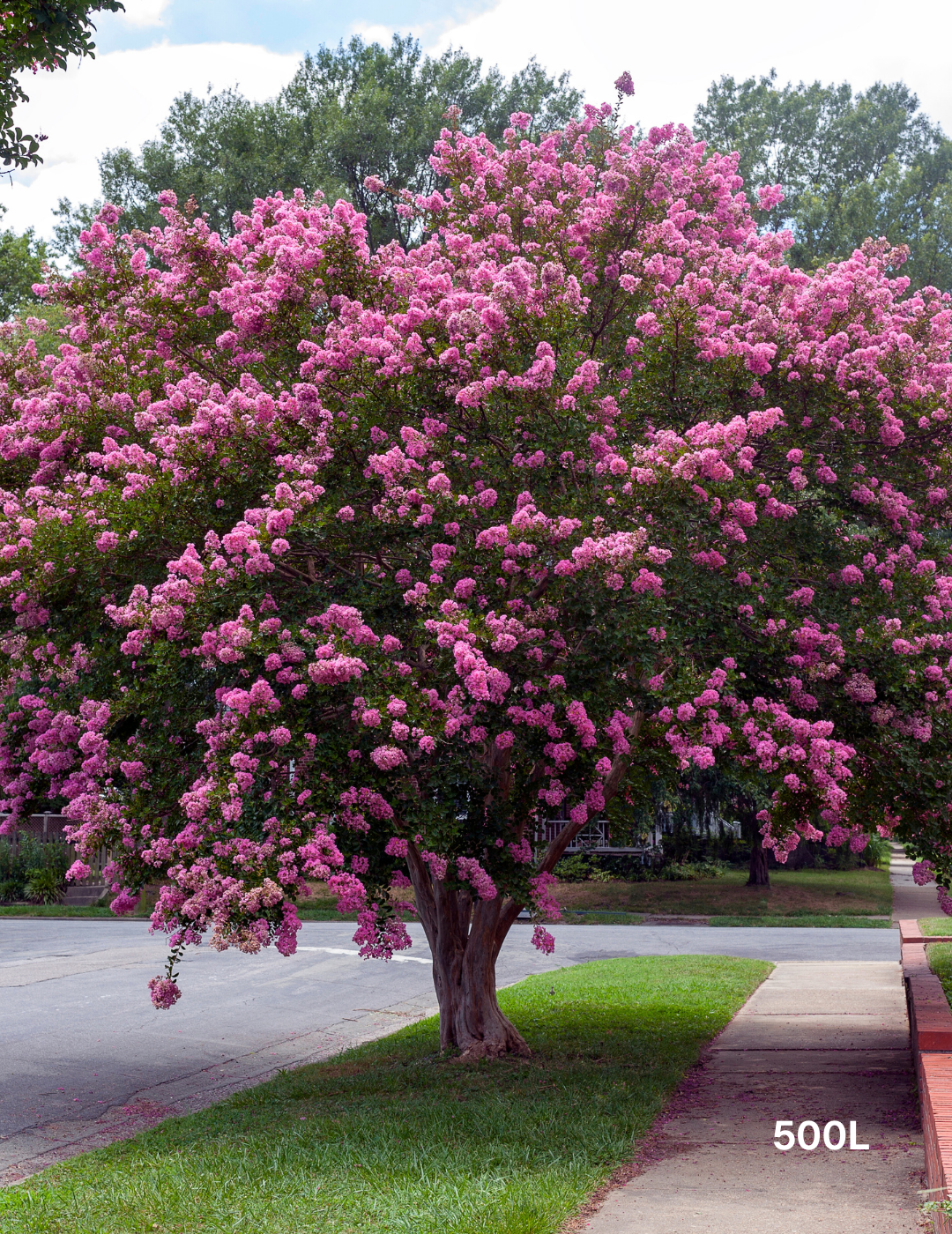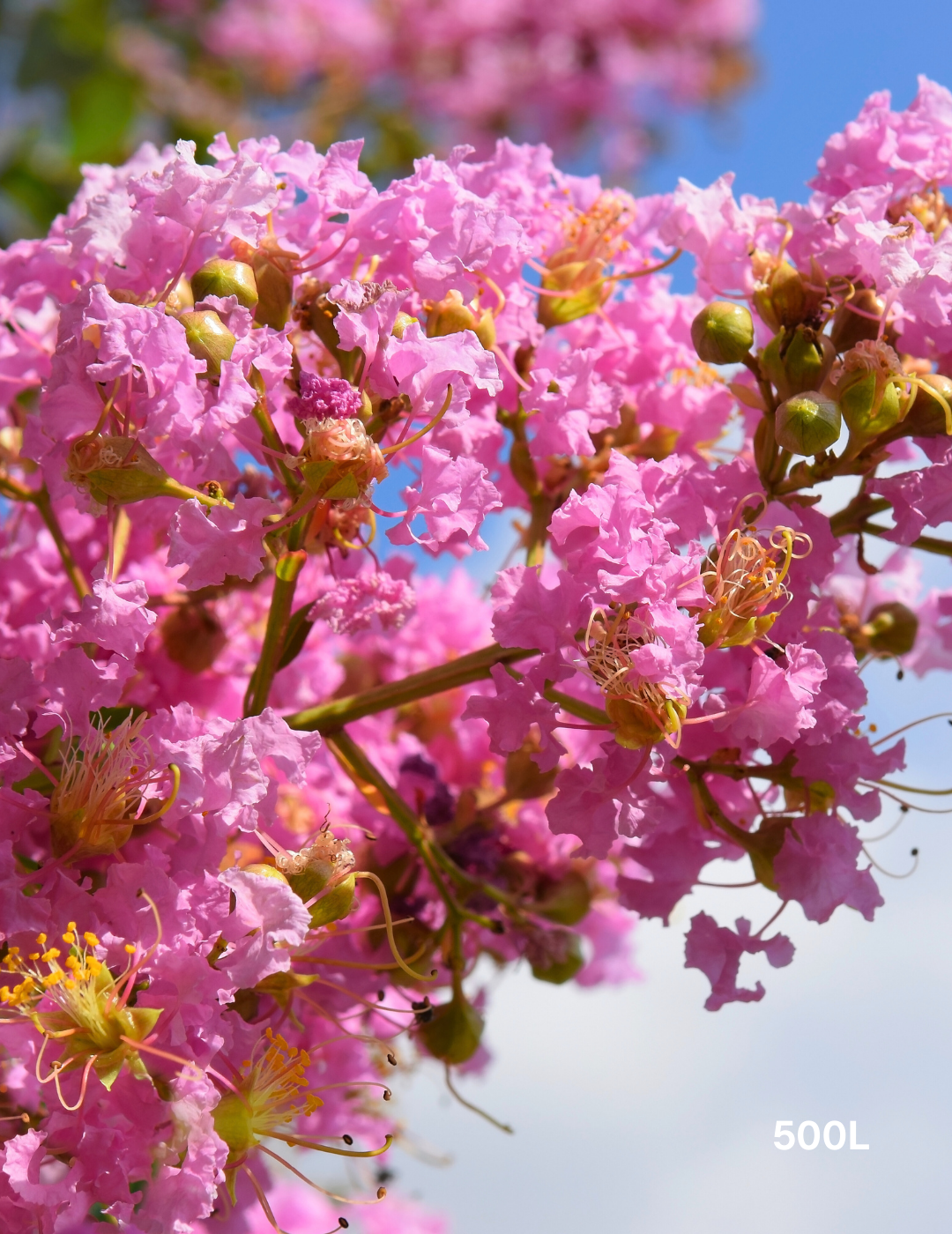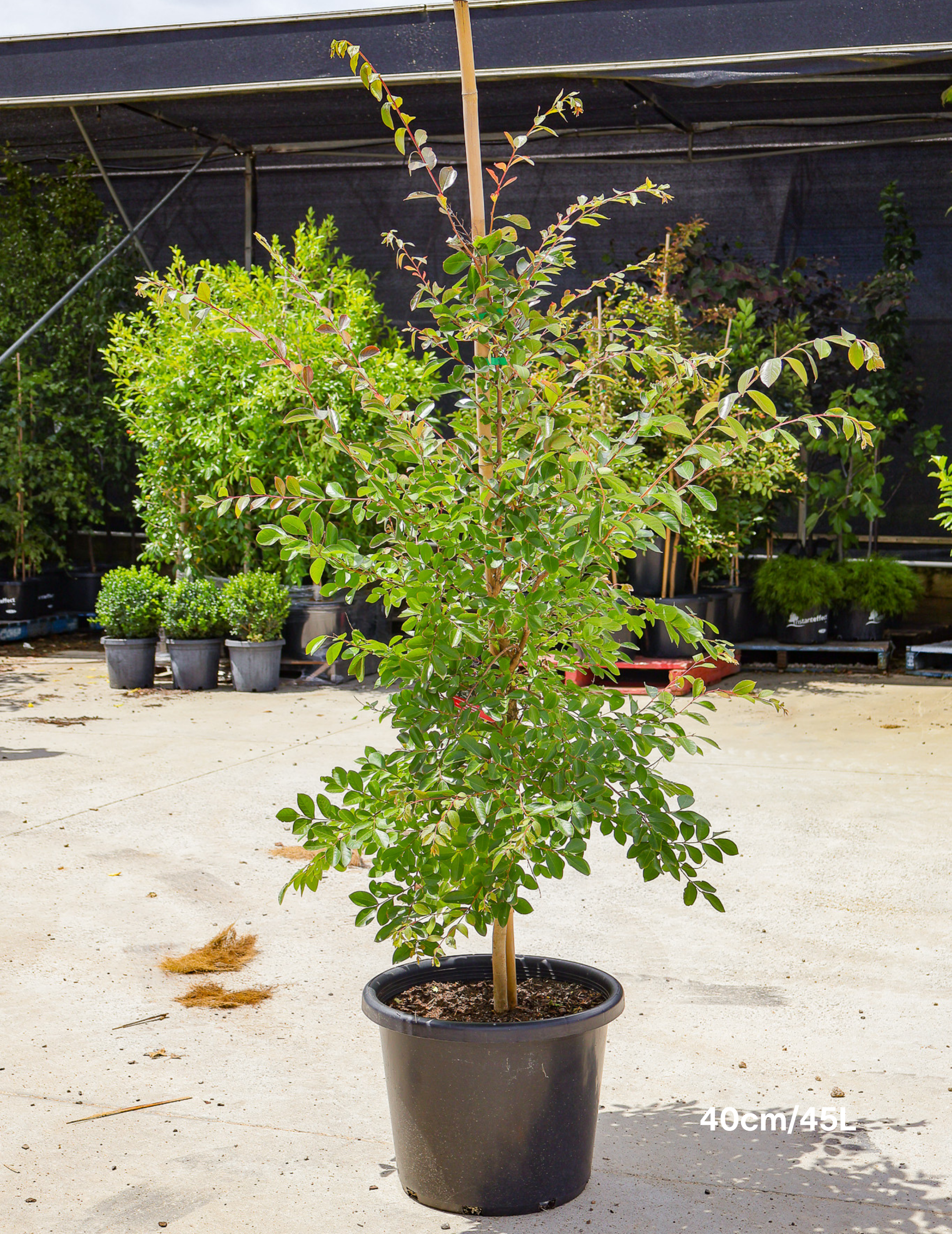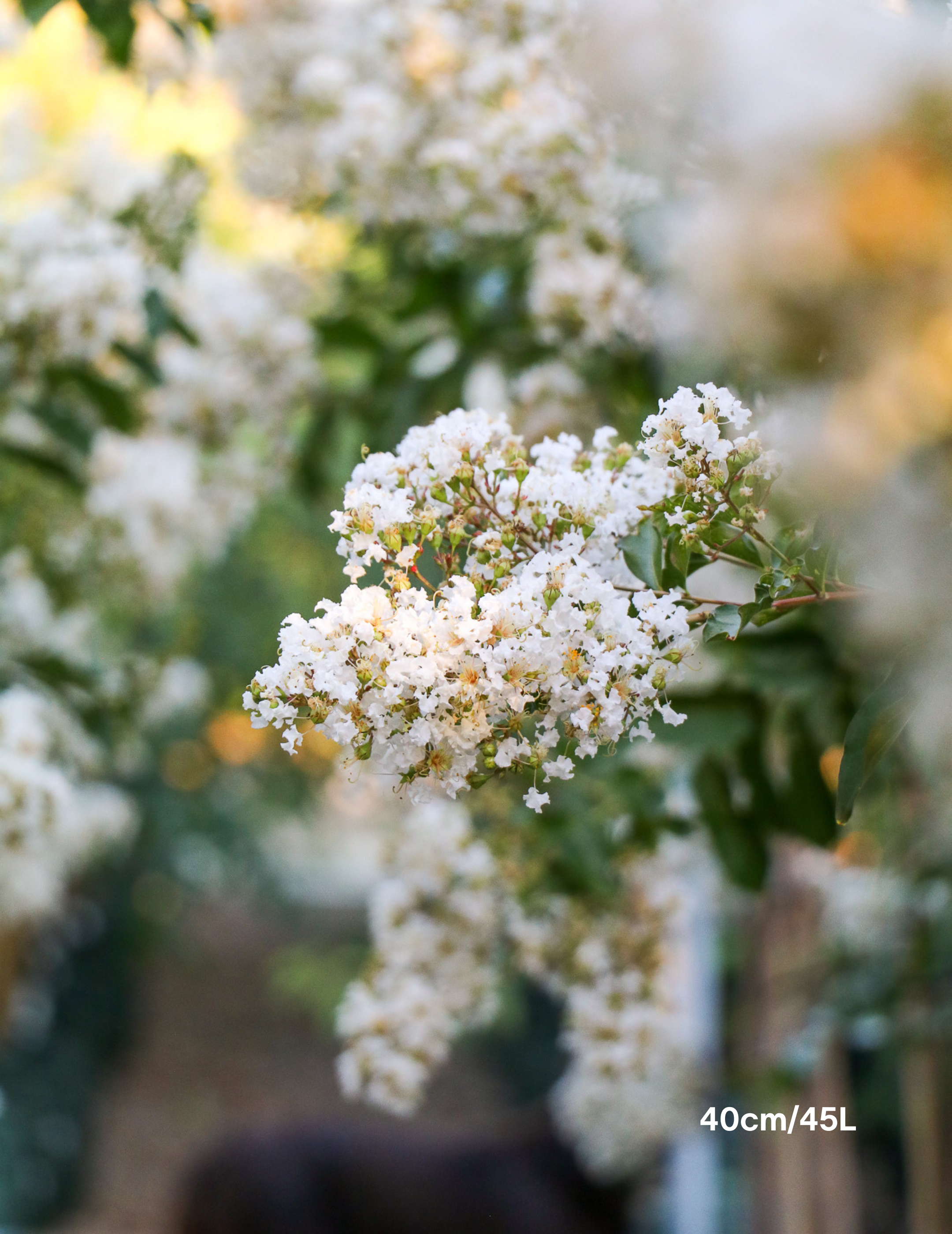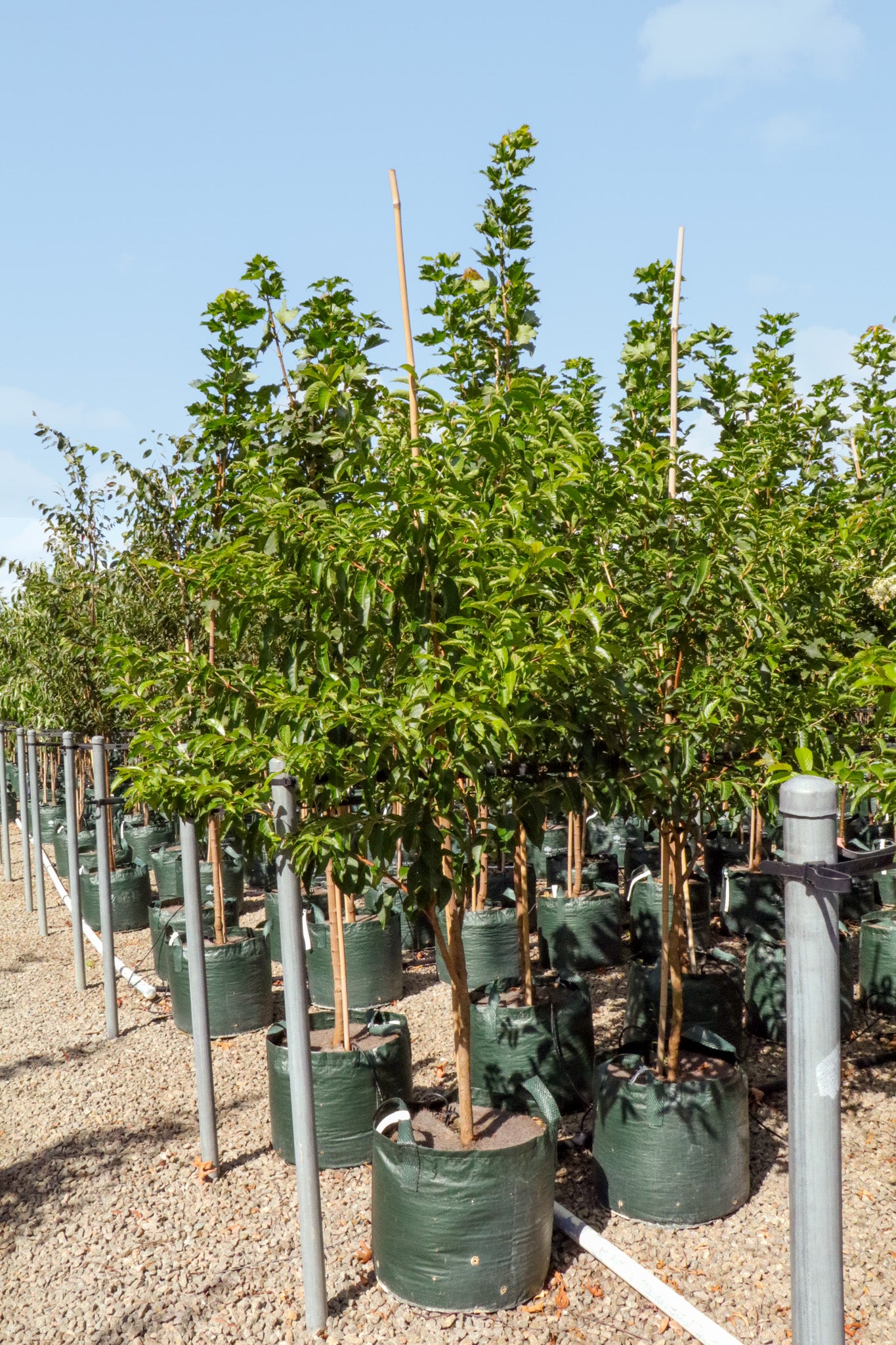Crepe Myrtles (Lagerstroemia indica) are fast-growing, deciduous flowering trees commonly used in Australian landscapes for their strong summer flowering, compact size, and attractive bark. Suitable for small gardens, courtyards, street planting, and feature use, they require minimal maintenance once established and perform reliably in most temperate climates.
Key Features
-
Height Range: 3–9 m depending on variety
-
Form: Upright, rounded, or multi-stemmed
-
Foliage: Glossy green in spring/summer, turning red, orange, or yellow in autumn
-
Flowers: Long-lasting clusters in white, pink, lavender, or deep red (variety dependent)
-
Bark: Smooth and mottled; peels in winter revealing pale wood beneath
-
Growth Rate: Moderate to fast
-
Lifespan: Long-lived when planted in correct conditions
-
Origin: Native to Asia, introduced to Australia in the early 1800s
Performance & Site Suitability
-
Sunlight: Full sun only. Flowering is significantly reduced in shade.
-
Soil: Free-draining preferred. Tolerates loam, sand, and improved clay. Avoid waterlogged soils.
-
Drought Tolerance: High once established. Requires consistent moisture during first 12–24 months.
-
Humidity Tolerance: Suitable for humid climates with proper airflow.
-
Root System: Non-invasive, safe near paving or structures.
Where to Plant Crepe Myrtles
Crepe Myrtles perform best in open areas with full sun exposure and space to grow. Ideal planting locations include:
-
Courtyards
-
Street plantings
-
Entryway features
-
Low screens or hedges (compact varieties only)
Avoid high-traffic areas where branches may be damaged or soil may become compacted.
Planting & Establishment
-
Clear site of weeds and debris before planting.
-
Dig a hole twice as wide as the root ball, with the same depth.
-
Improve soil with compost only if structure is poor.
-
Backfill firmly, ensuring the tree is planted at the same depth it was in the container.
-
Water deeply immediately after planting.
Watering
-
Establishment phase: Deep water twice weekly.
-
Post-establishment: Water only during extended dry periods.
-
Do not allow soil to become soggy. Avoid shallow daily watering.
Pruning
-
Prune only in winter while dormant.
-
Remove dead, damaged, or crossing branches.
-
Do not top Crepe Myrtles — this reduces flowering and weakens form.
-
Thin interior branches slightly to improve airflow and light penetration.
Fertilising
-
Apply a balanced slow-release fertiliser in early spring if required.
-
Avoid over-fertilising, which can cause excess foliage at the expense of flowers.
Mulching
-
Apply organic mulch 5–7 cm thick around the base, keeping clear of the trunk.
-
Mulch helps retain moisture, regulate temperature, and suppress weeds.

Common Issues
-
Leaf Spot / Powdery Mildew: Occurs in humid areas with poor airflow. Select resistant varieties, prune to open canopy, and avoid wetting foliage.
-
Poor Flowering: Usually due to insufficient sunlight or excessive pruning.
-
Brown Leaf Tips: Common in dry spells or with poor drainage. Check soil moisture.
Why Choose Crepe Myrtle?
Crepe Myrtles are ideal if you need:
-
A flowering feature tree between 3–9 m
-
High summer colour impact with low water use
-
A non-invasive root system
-
A tree that suits compact or structured spaces
-
Minimal maintenance once established
Avoid if you need:
-
Dense year-round foliage
-
Heavy shade
-
A fully evergreen option
Where to Buy
We grow and supply a wide range of Lagerstroemia indica varieties in multiple colours and forms, selected for Australian conditions and landscape use. All stock is locally grown and available in a range of advanced sizes.
